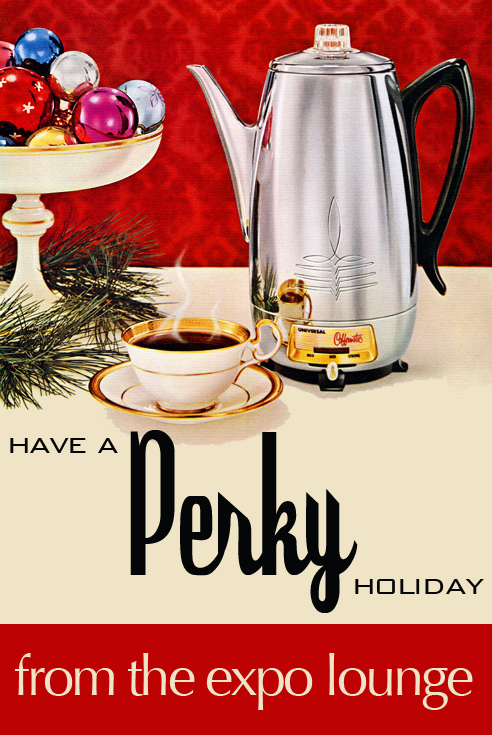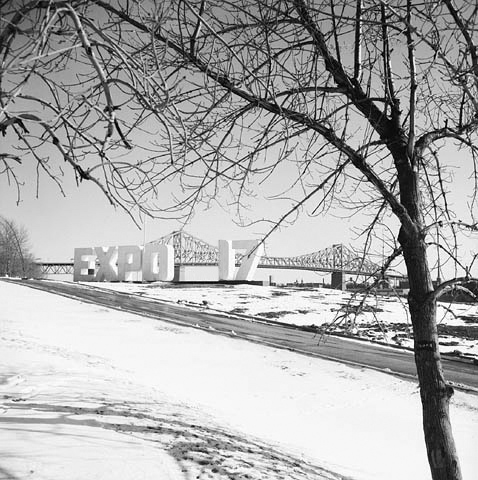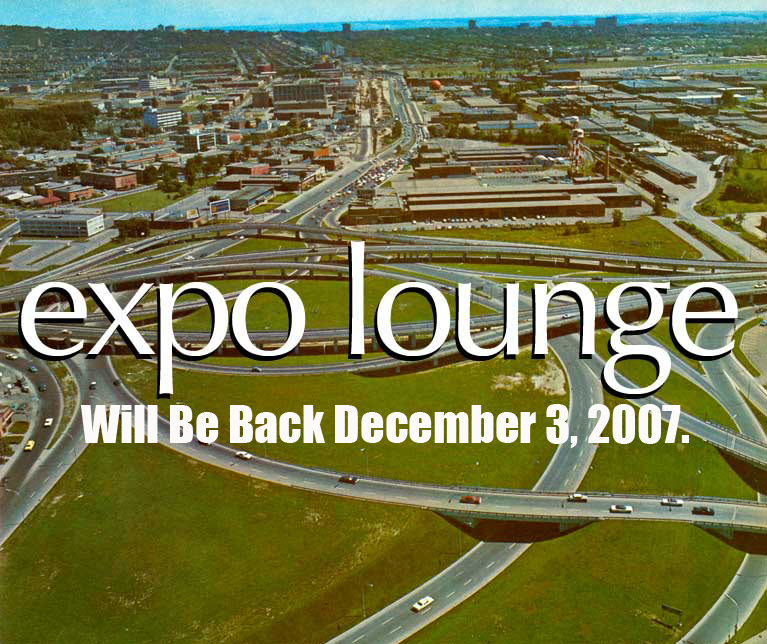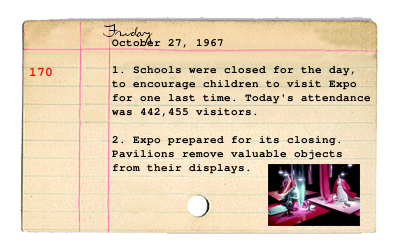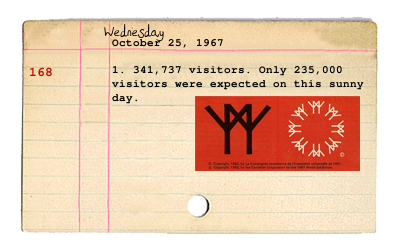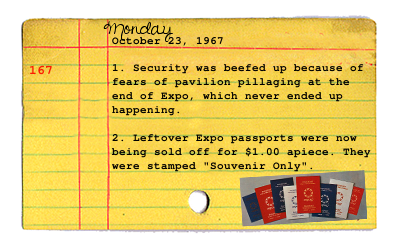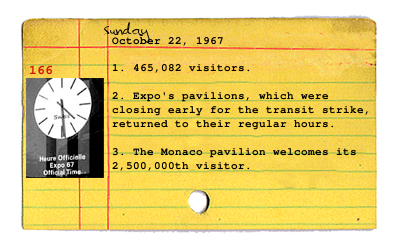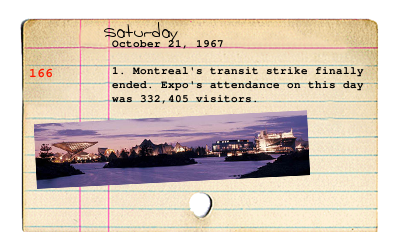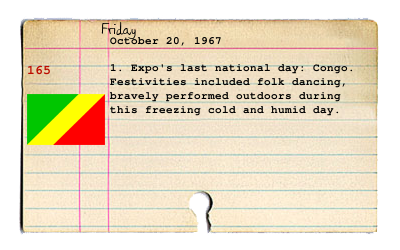
Monday, December 31, 2007
Monday, December 24, 2007
Sunday, December 23, 2007
Betty Boo

 Around the same time as Lady Miss Kier of Deee-Lite, another retro-look singer had caught my attention and tapped into my imagination: Miss Betty Boo.
Around the same time as Lady Miss Kier of Deee-Lite, another retro-look singer had caught my attention and tapped into my imagination: Miss Betty Boo.Born Alison Moira Clarkson in Kensington, London in 1970, Boo shot to stardom with her chart-topping 1990 debut release, Boomania. What distinguished Betty Boo was her comic book/cartoon persona and chirpy rap vocals... a cross somewhere between Emma Peel and Salt-N-Pepa.
Awarded Best Newcomer at the 1991 Brit Awards, Betty's most successful single this side of the atlantic (and my personal favorite) was Doin' The Do. The single reached number one on Billboard's U.S. dance charts and was accompanied by a kitchy video which featured Betty's rebellious nature at it's pinnacle.
Unfortunately, Betty Boo's second LP Grrr! It's Betty Boo failed to follow up on Boomania's success. The album was described as "criminally overlooked" by none other than Madonna, who even tried at one point to sign Betty to her Maverick label...
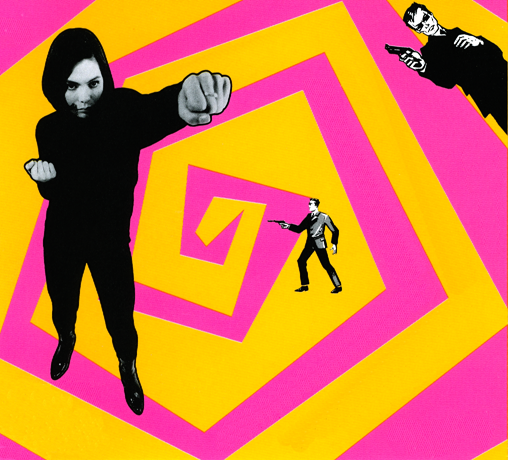
images: (1 and 3) "Doin' the Do" cover art
(2) myspace.com
Friday, December 21, 2007
Saturday, December 15, 2007
Graphis Magazine's Special Expo 67 Issue
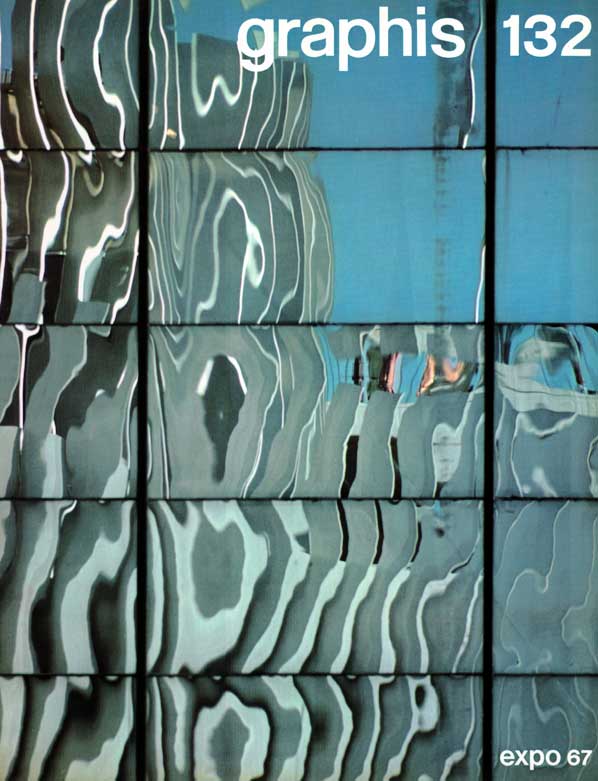 In 1967, Graphis, a Swiss magazine dedicated to graphic and applied art, dedicated the entire issue #132 to the 1967 World Exhibition in Montreal.
In 1967, Graphis, a Swiss magazine dedicated to graphic and applied art, dedicated the entire issue #132 to the 1967 World Exhibition in Montreal.Hailing Expo as "a unique art form", the special issue sought to draw attention to the "significant artistic accomplishments produced by the occasion" from a design viewpoint. Subjects included Environmental Aspects of Expo 67, Official Graphics at Expo 67, design reviews of pavilions and exhibits (including Quebec, U.S. and Czechoslovakia) as well as a feature on La Ronde.
The result is an exquisite document about Expo's most successful designs, and the small graphic details so often overlooked by the general public...
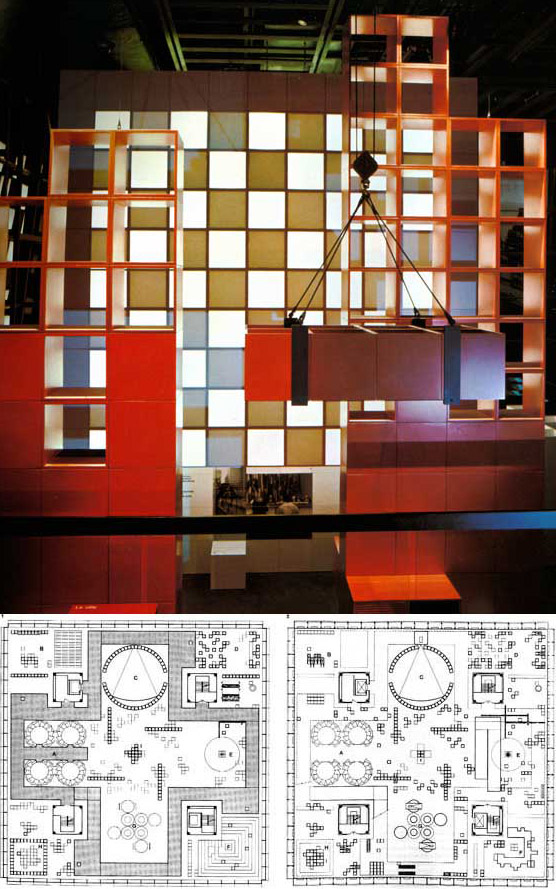 A shot of the interior (top) and floorplans (bottom) of the Quebec pavilion.
A shot of the interior (top) and floorplans (bottom) of the Quebec pavilion.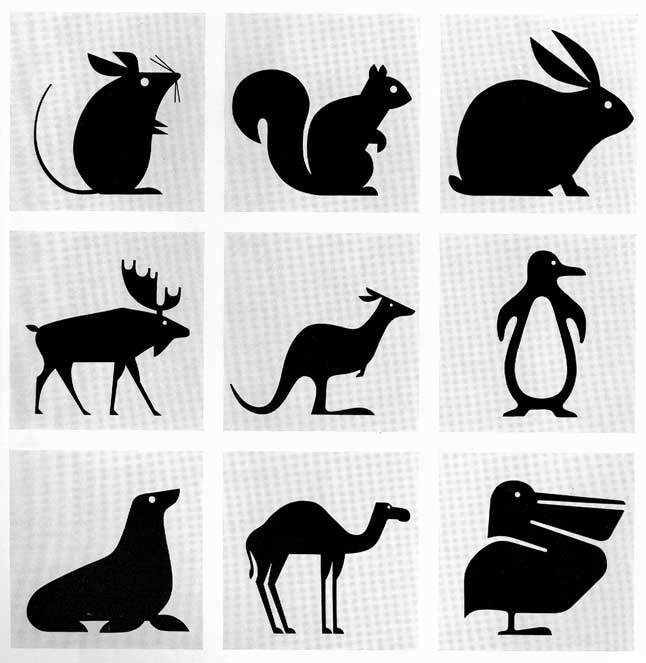 Animal pictograms designed for the Victoria parking lot.
Animal pictograms designed for the Victoria parking lot. Colorful panels adorned Expo's many snack bars and refreshment concessions.
Colorful panels adorned Expo's many snack bars and refreshment concessions.images: personal collection
Friday, December 7, 2007
Braniff International Airways
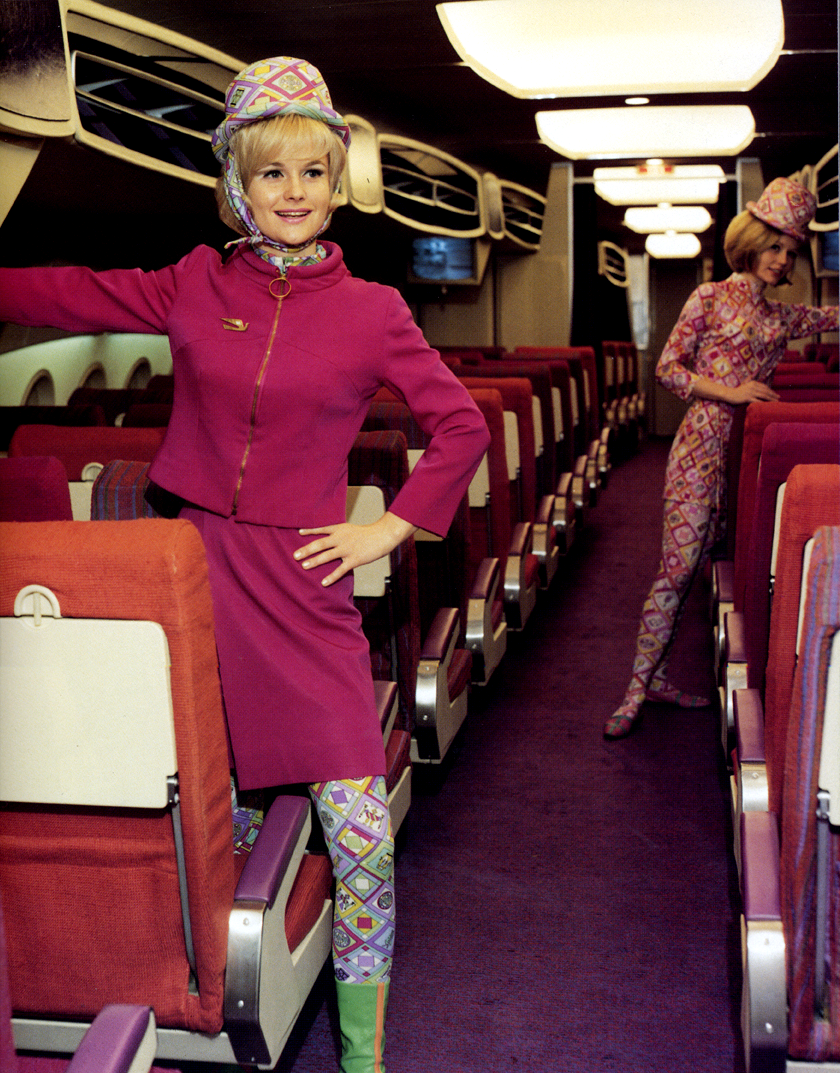 Stewardesses pose in a mod mauve interior, 1965.
Stewardesses pose in a mod mauve interior, 1965.Braniff International Airways was founded in 1928 by brothers Thomas E. Braniff and Paul Revere Braniff.
In 1964, the poorly-managed airline was bought over by insurance tycoon Troy Post. Under the direction of advertising executive Mary Wells of Jack Tinker Associates, a massive overhaul of the Braniff image was launched in 1965: a campaign known as "The End of the Plain Plane". New Mexico architect Alexander Girard and Italian fashion designer Emilio Pucci were among those recruited for this project.
First on the agenda was to overhaul Braniff's public image, which included changing the staid red, white, and blue color scheme to a wide palette of bright hues. A new jelly bean fleet consisted of bold colors such as ochre, orange, turquoise, baby blue, lemon yellow and lavender; with white wings and tails. (Interesting to note is that lavender was dropped after one month as it is considered bad luck in Mexico.)
Wild colors were also applied to aircraft interiors, gate lounges, ticket offices, and even the corporate headquarters. Art to complement the color schemes was flown in from Mexico, Latin America, and South America.
For the crew's uniforms, Emilio Pucci used nautical themes, while the stewardesses were outfitted in "space age" themes. The latter included clear plastic bubble helmets (to protect coiffures) and uniforms with interchangeable parts that could be removed and added as needed.
Today, the vintage Pucci attire designed for Braniff is highly valuable...
 747 Braniff Place on her home turf... Dallas, Texas.
747 Braniff Place on her home turf... Dallas, Texas.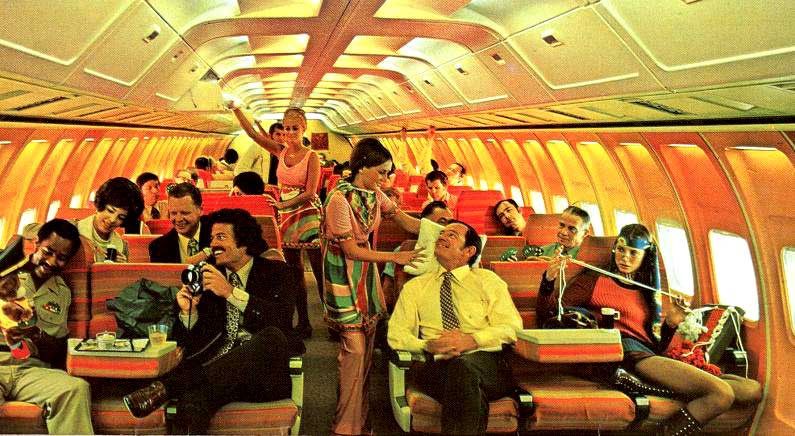 Stewardesses in Pucci's 1969 uniforms, in a groovy orange interior.
Stewardesses in Pucci's 1969 uniforms, in a groovy orange interior. Fort Worth room at Dallas Love Field, 1968.
Fort Worth room at Dallas Love Field, 1968. This meal is actually an example of the coach class! How times have changed!
This meal is actually an example of the coach class! How times have changed!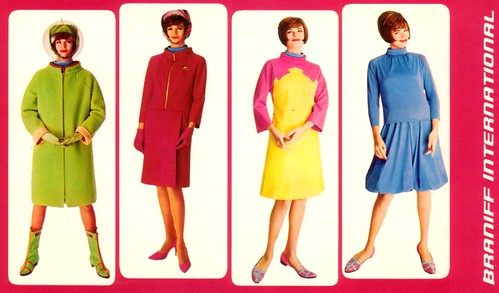 Emilio Pucci's space age designs for Braniff stewardesses, 1965.
Emilio Pucci's space age designs for Braniff stewardesses, 1965.images: (1) worldofkane.blogspot.com
(2) braniffpages.com
(3) oobject.com
(4) unknown source
(5) braniffpages.com
(6) unknown source
Monday, December 3, 2007
The Christian Pavilion
 The Christian Pavilion at Expo 67 was of a modern structure of wood and glass. Massive roof beams shaped like curved check marks plunged to almost ground level, then soared up beside the St. Lawrence River. A garden patio featured cedar trees, a gift from Lebanon, as well as modest concrete stools and where visitors could bathe feet in cooling fountains.
The Christian Pavilion at Expo 67 was of a modern structure of wood and glass. Massive roof beams shaped like curved check marks plunged to almost ground level, then soared up beside the St. Lawrence River. A garden patio featured cedar trees, a gift from Lebanon, as well as modest concrete stools and where visitors could bathe feet in cooling fountains.Situated on Île Notre Dame, the pavilion was symbolically placed between those of biblical countries Israel and Greece, and the United Nations pavilion. 8 churches worked to present a joint message in a spirit of cooperation.
The pavilion's theme was the Eighth Day, where man was free to create what he wanted on Earth. This Christian view of responsibility and reality was illustrated in a pavilion that had no stained glass, no religious art, no organ music.
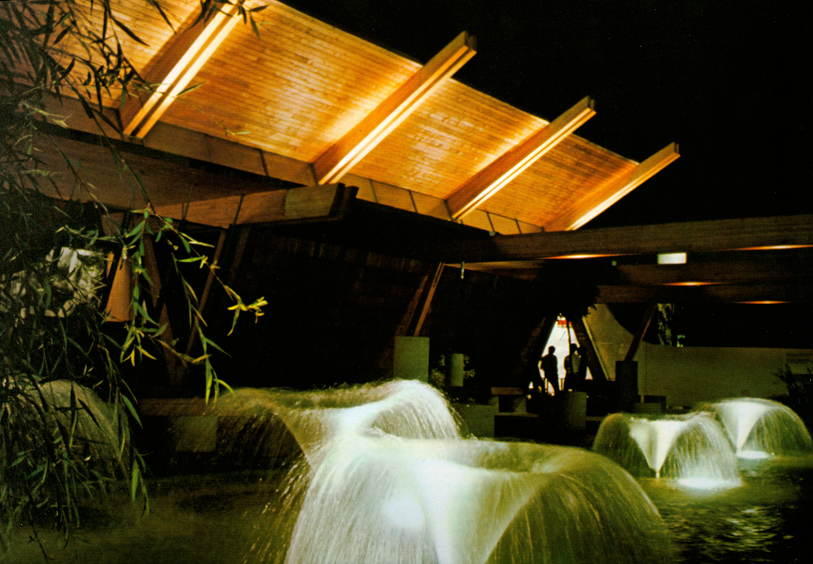 The first section of the pavilion sought to show "the world as it is", the so-called normal aspects of life. A series of cubes featured over 300 photographs of this everyday life. One of them was mirrored to show the visitor his or her own reflection and to underline the fact that everyone is "part of the picture". Photographs of densely crowded streets papered the walls, to a soundtrack of mixed crowd noises and the occasional scream. An insistent rhythm, which was actually the sound of a human heartbeat many times amplified, seemed to swell louder and louder, intensifying the atmosphere.
The first section of the pavilion sought to show "the world as it is", the so-called normal aspects of life. A series of cubes featured over 300 photographs of this everyday life. One of them was mirrored to show the visitor his or her own reflection and to underline the fact that everyone is "part of the picture". Photographs of densely crowded streets papered the walls, to a soundtrack of mixed crowd noises and the occasional scream. An insistent rhythm, which was actually the sound of a human heartbeat many times amplified, seemed to swell louder and louder, intensifying the atmosphere.A staircase led the visitor down to the second section, into the pit of human experience. A shocking series of nightmarish images was presented with themes such as drugs, alcohol, violence, disease, etc... A controversial film entitled The Eighth Day? (the theme of the pavilion with a question mark) was part of this section. The film's designer worked for months sifting through newsreel footage, to assemble this 13-minute horror story of war, atrocity, murder and desolation.
From the cramped hell, the visitor then climbed into the spacious final hall, dominated by giant photographs and a series of 5 biblical quotations. This final section sought to show that life could have relevance, meaning, hope. There were seats where the visitor could rest and consider the implications of what he or she saw in the previous sections.
Perhaps this final section was a little too low-key, as some visitors were baffled, calling the pavilion's experience everything from blasphemous to outrageously poor in taste...
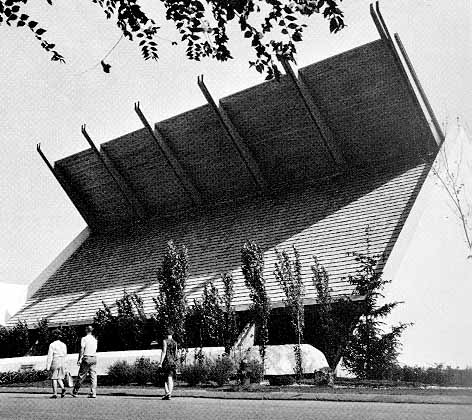 images: (top) courtesy DC Hillier
images: (top) courtesy DC Hillier (center) personal collection
(bottom) westland.net/expo67
Saturday, November 24, 2007
On Vacation
Wednesday, November 21, 2007
Thursday, November 15, 2007
Sesame Street Fever
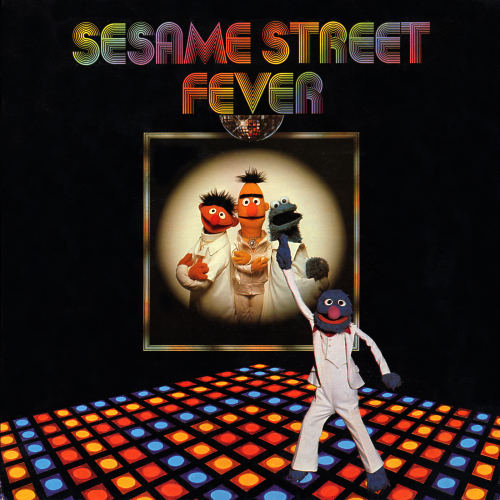 Grover, Ernie, Bert and Cookie Monster strut their stuff for Sesame Street Fever.
Grover, Ernie, Bert and Cookie Monster strut their stuff for Sesame Street Fever.By the late 1970's, Sesame Street had established itself as a forerunner in children's educational television.
In 1977, Sesame Street dipped into the disco craze with the release of the Sesame Street Fever album. This Saturday Night Fever parody featured our favorite Muppets dressed in full Bee Gees/John Travolta splendor, complete with Grover in a white disco suit!
Interesting to note is that original Bee Gee Robin Gibb appeared on 3 of the album's 6 tracks. According to the LP sleeve: "Robin Gibb appears courtesy of his children - Melissa and Spencer Gibb"...
Sesame Street Fever ended up being a surprise commercial success both in terms of chart performance and sales. It was the Sesame Street franchise's first charting album, peaking at #75 on Billboard's Pop Albums Chart. It was also certified Gold by the Recording Industry Association of America (RIAA).
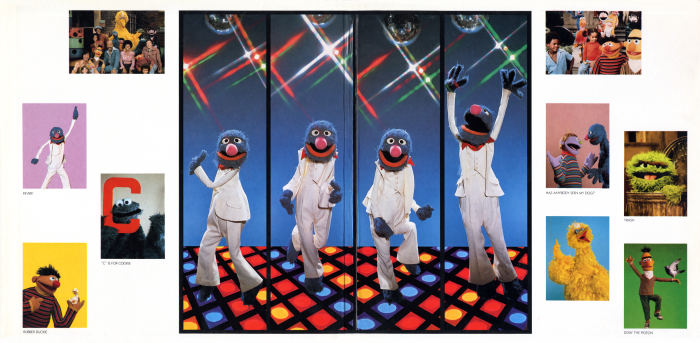 The interior of the gatefold LP.
The interior of the gatefold LP. An ultra-rare 45 rpm single from Sesame Street Fever.
An ultra-rare 45 rpm single from Sesame Street Fever.images: (1-2) goofspot.com
(3) unknown source
Friday, November 9, 2007
Radio-Canada Commemorates Expo 67
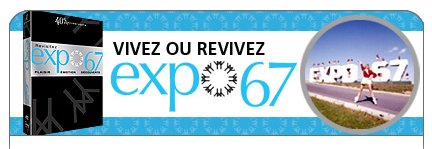 Radio-Canada, the french version of the CBC, have just released this magnificent 4-disc DVD set to commemorate the 40th anniversary of Expo.
Radio-Canada, the french version of the CBC, have just released this magnificent 4-disc DVD set to commemorate the 40th anniversary of Expo.This fab but french only DVD set includes:
Disc 1
• 24 National Pavilions
• 5 Canadian Pavilions
• 11 Theme Pavilions
Disc 2
• La Ronde
• Transportation at Expo 67
• Hostesses, Gastronomy, Fashion, etc.
Disc 3
• Opening Ceremonies
• Closing Ceremonies
• Expo 67's Great Moments
• Prologue, Impressions
Disc 4
• Interviews with Michel Jasmin and Yves Jasmin
• Extras: Dignitairies, Celebrities, Documents, etc.
 image: cbcshop.ca
image: cbcshop.ca
Saturday, November 3, 2007
The Turcot Interchange
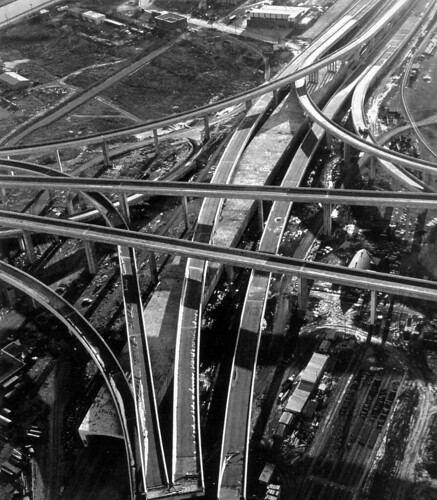 The Turcot Interchange under construction, 1966.
The Turcot Interchange under construction, 1966.Throughout the 1960's, the city of Montreal was in a road building frenzy.
Sophisticated highway systems were put into place in anticipation of the millions of motor tourists expected to visit Montreal during Expo 67. Inaugurated in 1967, the Turcot Interchange was just one of the many mega-projects that Montreal undertook during this effervescent period.
The impressive spaghetti of overpasses and elevated ramps was built west of downtown Montreal, connecting highways 20, 720 and 15. Using 220,000 cubic yards of concrete and 21,000 tons of steel, the 4 level interchange's 4.5 miles of roads spanned over an area of 17 acres. It was built high above the ground (up to 100 feet at certain points) to accommodate ships passing through the Lachine Canal.
The interchange's original design also included groovy recessed lighting embedded in the walls of the ramps, rather than traditional lamp posts.
The newly-built Turcot Interchange was a stunning sight to behold. Along with Expo, it played a role in establishing Montreal as a world class city...
Sophisticated highway systems were put into place in anticipation of the millions of motor tourists expected to visit Montreal during Expo 67. Inaugurated in 1967, the Turcot Interchange was just one of the many mega-projects that Montreal undertook during this effervescent period.
The impressive spaghetti of overpasses and elevated ramps was built west of downtown Montreal, connecting highways 20, 720 and 15. Using 220,000 cubic yards of concrete and 21,000 tons of steel, the 4 level interchange's 4.5 miles of roads spanned over an area of 17 acres. It was built high above the ground (up to 100 feet at certain points) to accommodate ships passing through the Lachine Canal.
The interchange's original design also included groovy recessed lighting embedded in the walls of the ramps, rather than traditional lamp posts.
The newly-built Turcot Interchange was a stunning sight to behold. Along with Expo, it played a role in establishing Montreal as a world class city...
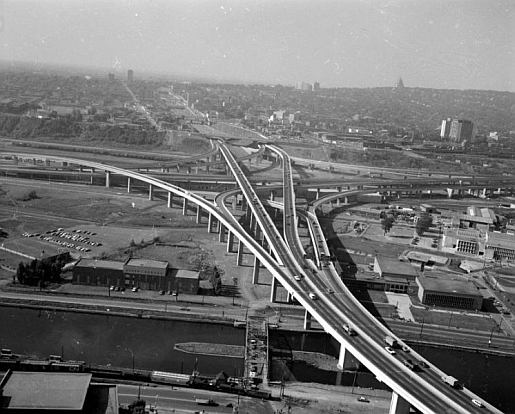 Northbound view of interchange near completion, 1967.
Northbound view of interchange near completion, 1967.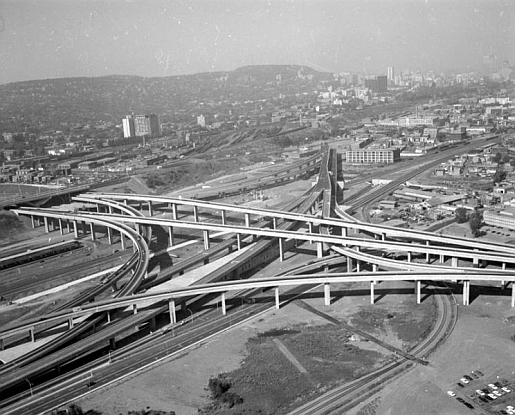 Westbound view of interchange near completion, 1967.
Westbound view of interchange near completion, 1967. Downtown Montreal can be seen in the background of this 1966 view.
Downtown Montreal can be seen in the background of this 1966 view. The recessed lighting of the completed Turcot Interchange, as seen in 1970.
The recessed lighting of the completed Turcot Interchange, as seen in 1970. The Mercier Bridge, at Turcot's westernmost point.
The Mercier Bridge, at Turcot's westernmost point.images: (1) bilan.usherbrooke.ca
(2-3-5) neath.wordpress.com
(4-6) personal collection
Thursday, November 1, 2007
40,000 Visits!
It is on this occasion that I'd like to thank each and every one of you that has come through the Expo Lounge turnstiles. Stay tuned for much more!!!
Monday, October 29, 2007
Hostess Application Form
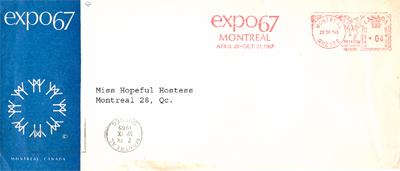
Ever wonder just what it took to be an official Expo 67 hostess?
Expo Lounge readers can now download and print out their very own copy of an unused Expo 67 application form, complete with original envelope!
Expo Lounge readers can now download and print out their very own copy of an unused Expo 67 application form, complete with original envelope!
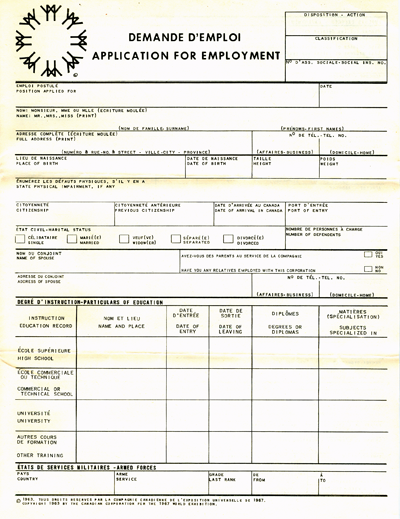
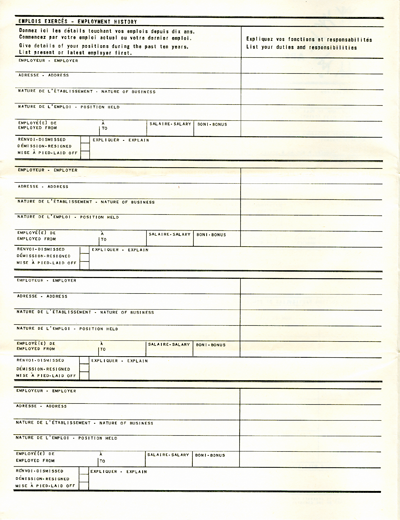
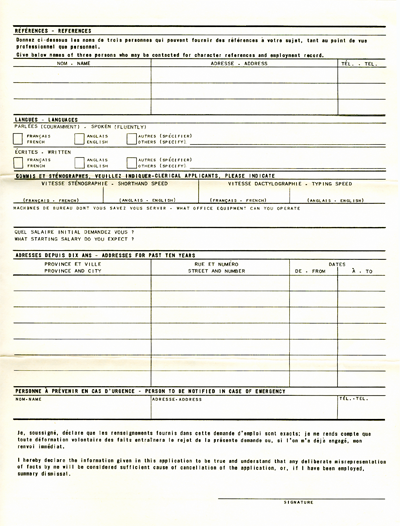
 images: author's own, from the Barbara Asgary collection
images: author's own, from the Barbara Asgary collectionSunday, October 28, 2007
Saturday, October 27, 2007
Friday, October 26, 2007
Thursday, October 25, 2007
Tuesday, October 23, 2007
Monday, October 22, 2007
Sunday, October 21, 2007
Saturday, October 20, 2007
Friday, October 19, 2007
Chalet Bar-B-Q
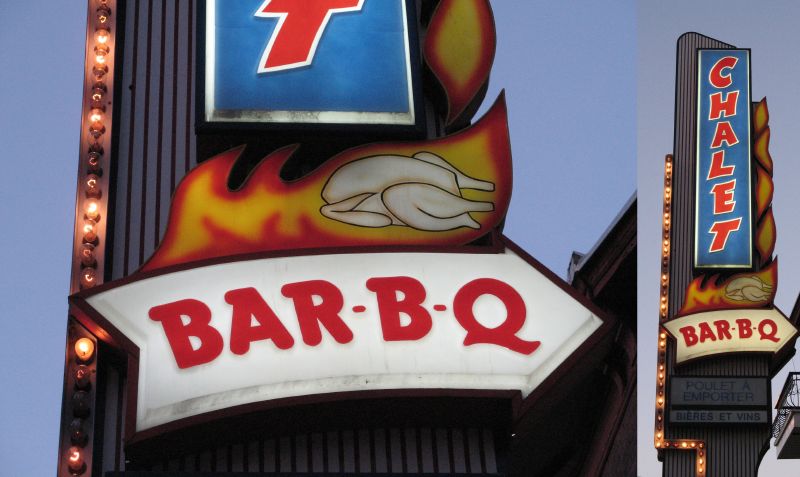 Chalet Bar-B-Q is a Montreal institution.
Chalet Bar-B-Q is a Montreal institution.Located on Sherbrooke street just off of Decarie, Chalet Bar-B-Q has been serving Montreal's best barbecue chicken for the past 63 years. Regular customers know that the back door is the way to get into the restaurant, while waitresses and hostesses serve patrons with a confidence that can only come from 35 years of experience...
Arguably, Chalet Bar-B-Q are the originators of the Montreal barbecue chicken formula [quarter breast or leg, served with fries, sauce, and a toasted bun] later made popular by such chains as St-Hubert BBQ or Swiss Chalet. Chalet Bar-B-Q 's secret lies somewhere between the legendary dipping sauce and the custom built brick ovens used to cook the chicken.
Either way, since 1944, generations have been enjoying this simple gastronomic pleasure. I know for me, the Chalet Bar-B-Q experience conjurs up warm childhood memories: this place invented comfort food!

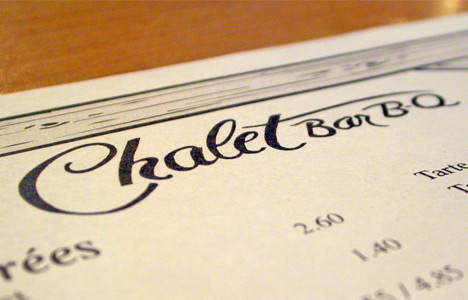
 images: all flickr.com, except menu pic: midnightpoutine.ca
images: all flickr.com, except menu pic: midnightpoutine.ca
Subscribe to:
Posts (Atom)
